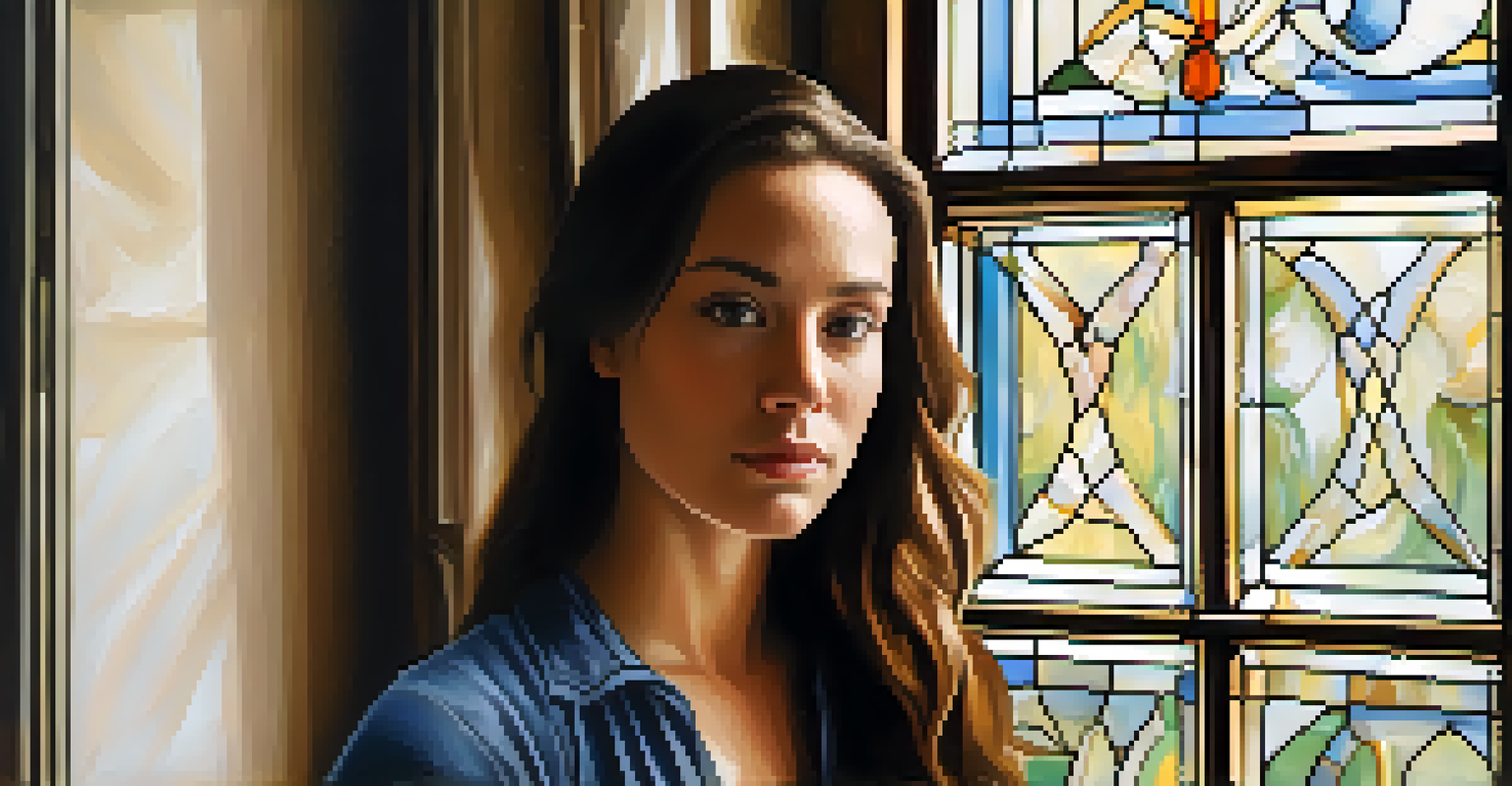Composition Techniques: Framing Stories Through the Lens

Understanding the Basics of Composition Techniques
Composition techniques form the backbone of visual storytelling. They guide how elements are arranged within a frame, influencing how viewers perceive and engage with the story. By mastering these techniques, you can enhance the emotional impact and clarity of your stories.
Composition is the master key to visual storytelling.
At its core, composition is about organizing visual elements to create harmony and balance. Think of it like arranging furniture in a room; the right layout can transform a space from cluttered to inviting. Similarly, effective composition can make your visuals more appealing and informative.
Different techniques, such as the rule of thirds or leading lines, act as tools in your storytelling kit. Each offers unique ways to draw attention to your subject and create a sense of movement or depth. Understanding these tools will empower you to tell your stories more effectively.
The Rule of Thirds: A Simple Yet Powerful Technique
The rule of thirds is a fundamental composition technique that can dramatically improve your storytelling. Imagine dividing your frame into nine equal sections, creating a grid of two horizontal and two vertical lines. Placing key elements along these lines or at their intersections makes your visuals more engaging and balanced.

This technique encourages viewers' eyes to travel through the image, making it more dynamic. For instance, if you’re capturing a landscape, placing the horizon along the top third line can create a more interesting composition than centering it. This subtle shift can evoke a sense of space and depth.
Mastering Composition Techniques
Understanding and utilizing composition techniques can significantly enhance the emotional impact and clarity of your visual storytelling.
While the rule of thirds is a great starting point, it's essential to remember it’s not a strict rule. Feel free to experiment with your compositions. Sometimes breaking the rule can lead to unique and captivating visuals that tell your story in unexpected ways.
Leading Lines: Guiding the Viewer’s Eye
Leading lines are another powerful composition technique that helps direct viewers' attention to your main subject. These lines can be anything from roads, rivers, or architectural elements that naturally draw the eye. By incorporating leading lines, you create a visual pathway that guides the viewer through your story.
Good composition is like a well-written sentence, it makes the viewer understand what you are trying to say.
For example, a photograph of a winding road can lead the viewer’s gaze toward a distant mountain, emphasizing depth and journey. This technique not only draws attention but also evokes emotions related to exploration and adventure. It’s a simple way to add narrative depth to your visuals.
As with any technique, the key is to use leading lines thoughtfully. Too many competing lines can confuse viewers rather than guide them. Strive for clarity and purpose in your compositions, ensuring that your lines serve the story you want to tell.
Framing: Creating Context and Focus
Framing is a composition technique that involves using elements within the scene to create a 'frame' around the subject. This could be trees, windows, or doorways that help isolate your subject and draw the viewer’s focus. By framing your subject, you provide context and enhance the storytelling aspect of your visuals.
Imagine capturing a portrait of a person through a window; the window frame offers an added layer of narrative. It not only highlights the subject but also provides context about their environment. This technique invites viewers to engage more deeply with the story being told.
Lighting Enhances Visual Stories
Effective use of lighting can transform your compositions, adding mood and depth to the narrative you want to convey.
Effective framing can also evoke emotions or set a mood. A dark, shadowy frame may convey mystery, while bright, open frames can suggest freedom and positivity. As you explore framing in your work, consider how it shapes the viewer’s emotional response.
Symmetry and Balance: The Art of Harmony
Symmetry and balance play vital roles in creating visually appealing compositions. A symmetrical arrangement can evoke feelings of calm and stability, making it a powerful tool in storytelling. Think of a perfectly centered reflection in a still lake; it creates a sense of harmony that resonates with viewers.
However, achieving balance doesn’t always mean symmetry. Asymmetrical compositions can be equally captivating when done thoughtfully. For instance, placing a large object on one side of the frame balanced by smaller elements on the opposite side creates visual interest and intrigue.
When experimenting with symmetry and balance, pay attention to how they influence the emotional tone of your work. A balanced composition might evoke serenity, while an asymmetrical one can create tension or excitement. Use these techniques to enhance the emotional narrative of your visuals.
Lighting: The Unsung Hero of Composition
Lighting is often the unsung hero of composition techniques, yet it dramatically affects how your story is perceived. The quality, direction, and color of light can create mood and depth, transforming an ordinary scene into something extraordinary. Understanding how to manipulate light can elevate your storytelling.
For instance, golden hour lighting—shortly after sunrise or before sunset—adds a warm glow that can make your subject appear more inviting. Conversely, harsh midday light might create stark shadows that evoke drama or tension. Recognizing the emotional impact of light helps you convey the right tone in your visuals.
Color Theory Influences Emotions
By applying color theory thoughtfully, you can evoke specific emotions and set the overall mood in your visual compositions.
Experimenting with different lighting conditions can also lead to unexpected results. Play with shadows, silhouettes, and highlights to create unique narratives. Remember, light can be your best friend in telling a compelling story through visuals.
Color Theory: Crafting Emotions Through Hues
Color theory is an essential aspect of composition that can significantly affect the emotions and messages conveyed in your work. Different colors evoke different feelings; for example, blue often communicates calmness, while red can evoke passion or urgency. By understanding how colors interact, you can enhance your storytelling.
Consider how you use color palettes in your compositions. A monochromatic scheme can create a sense of unity, while complementary colors can add energy and contrast. Thoughtful color choices can draw attention to your subject and set the overall mood of the scene.

As you experiment with color, remember that context matters. The same color can evoke different emotions depending on the surrounding hues. By considering the emotional undertones of your color choices, you can create a more profound connection with your audience.